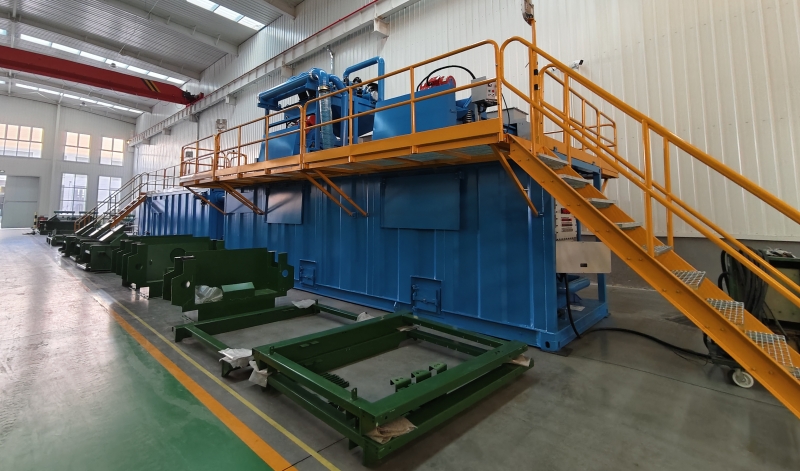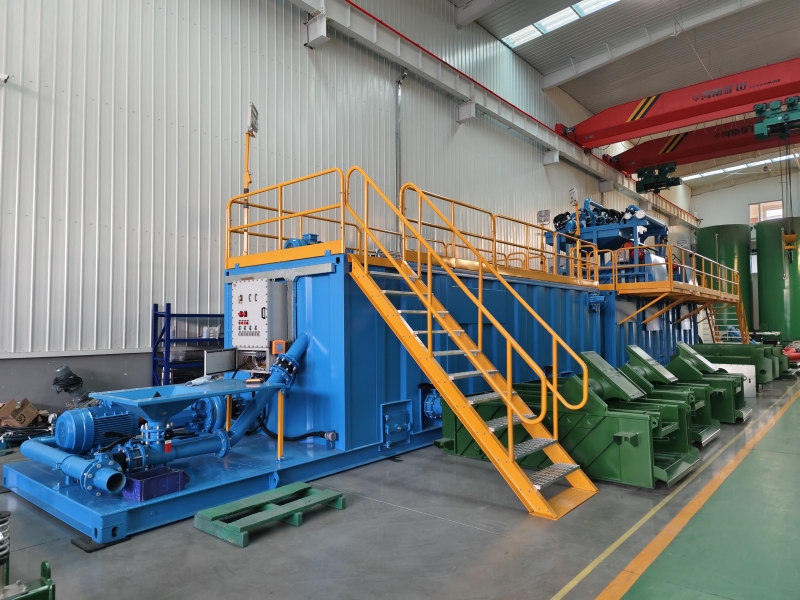

Hebei GN Solids Control Co., Ltd. has specialized in solids control and waste management equipment for more than 15 years. GN stands as one of the largest manufacturers of solids control equipment globally. We operate three factories spanning a total area of 110,000 square meters in China and maintain branch offices with service capabilities in both the United States and Australia. Designated as a National High-Tech Enterprise, GN boasts a robust management system. Since 2010, we have consecutively held the American API Quality Management System Certification for 14 years and maintained China Classification Society certifications for ISO9001, ISO14001, and ISO45001 over many years. Our solids control equipment bears certifications from EU CE, ATEX, and International IECEx. GN employs an ERP Cloud + CRM Cloud management system for seamless production and operation, ensuring digital control over the production process and quality traceability. Approximately 70% of our products are exported internationally, reaching over 70 countries worldwide.
In the Horizontal Directional Drilling (HDD) industry, a Mud Recycling System (also called a drilling fluid recycling system) is essential for maintaining the quality and consistency of the drilling fluid (often referred to as mud) during the drilling process. HDD is commonly used for installing underground utilities like pipelines, cables, and conduits without digging trenches. It requires precise control over the drilling mud, which serves several functions, such as cooling and lubricating the drill bit, carrying cuttings to the surface, and stabilizing the borehole.
A Mud Recycling System helps ensure that the drilling mud remains effective throughout the operation by filtering, cleaning, and recycling it, reducing the need for new fluid and minimizing waste.
Key Components of a Mud Recycling System in HDD:
- Shale Shaker:
- As described earlier, the shale shaker is the first line of defense for separating large drill cuttings from the drilling fluid.
- It uses a vibrating screen to filter out solids, allowing the cleaner mud to flow into the next part of the system.
- Desander:
- After the shale shaker, the mud usually goes through a desander. This is a cyclonic separation device that removes finer sand and silt particles (typically from 40 to 70 microns in size) from the drilling fluid.
- The desander uses centrifugal force to spin the mud and force heavier particles (like sand) to the bottom, where they are discharged, leaving the cleaner mud to pass through.
- Desilter:
- The desilter follows the desander and works to remove even finer particles (typically from 15 to 40 microns in size). It is a finer version of the desander and is also a cyclonic separator.
- It further refines the drilling fluid, ensuring it is cleaner before it is returned to the drill.
- Mud Cleaner:
- A mud cleaner is a combination of a shale shaker, desander, and desilter, usually mounted on a single unit. This system can clean the drilling fluid more effectively by separating different particle sizes in a multi-stage process.
- The mud cleaner’s purpose is to recover valuable fluid and remove solids of various sizes in a more efficient manner.
- Mud Tank System:
- The mud tank serves as a storage vessel for the drilling fluid, allowing for the collection of both recycled and fresh mud. It is usually equipped with agitators to keep the mud mixed and maintain a consistent flow.
- Mud tanks can also include additional filtration or chemical treatment systems if needed to further enhance the fluid’s performance.
- Transfer Pumps:
- Pumps are used throughout the mud recycling system to move the drilling fluid between various components, ensuring continuous circulation of the mud from the rig to the surface and back into the borehole.
- Chemical Treatment:
- In some cases, chemical additives are used in the recycling system to adjust the properties of the drilling fluid, such as viscosity or pH level, to better suit the conditions of the borehole or to stabilize the formation.
Functions of the Mud Recycling System in HDD:
- Cutting Removal:
- One of the primary functions is to remove cuttings (solid particles) created by the drill bit as it bores through the ground. Efficient separation of solids ensures that the drilling fluid remains effective.
- Recycling of Drilling Fluid:
- The system recycles the mud, allowing it to be reused in the drilling process. This minimizes the need for fresh drilling fluid and reduces waste disposal requirements, making the process more environmentally friendly and cost-effective.
- Improving Drilling Efficiency:
- By keeping the drilling fluid clean and maintaining its properties (like viscosity and density), the system helps ensure smooth drilling. This prevents problems such as stuck drills, poor hole stability, and pump issues.
- Cost Reduction:
- Recycling the drilling fluid reduces the cost of constantly purchasing new fluid and disposing of waste. In addition, it minimizes the environmental impact associated with mud disposal.
- Controlling Borehole Stability:
- Properly cleaned and well-maintained drilling fluid helps stabilize the borehole by preventing collapse and minimizing the risk of formation damage.
- Cutting Removal:
- In some cases, chemical additives are used in the recycling system to adjust the properties of the drilling fluid, such as viscosity or pH level, to better suit the conditions of the borehole or to stabilize the formation.
Benefits of a Mud Recycling System in HDD:
- Environmental Protection:
- Recycling drilling fluids reduces the environmental impact, particularly in areas where disposing of used mud might be difficult or costly. It minimizes contamination and waste.
- Increased Efficiency and Cost Savings:
- Continuous recycling reduces the need for purchasing new drilling fluid, cuts down on waste management costs, and reduces downtime associated with mud replacement.
- Improved Drilling Performance:
- A clean, well-maintained mud system allows for smoother and more consistent drilling, reducing the chances of encountering issues like stuck pipe, loss of circulation, or borehole instability.
- Adaptability to Different Soil Conditions:
- Mud recycling systems can be adapted for different soil types and drilling conditions, providing flexibility in managing various types of drilling fluid and cutting loads.
For the prompt reply,please find the info below.
Michael song
Aisa&Europe Market Manager
Whatsapp: 8617801799913
Email: michael@gnsolidscontrol.co